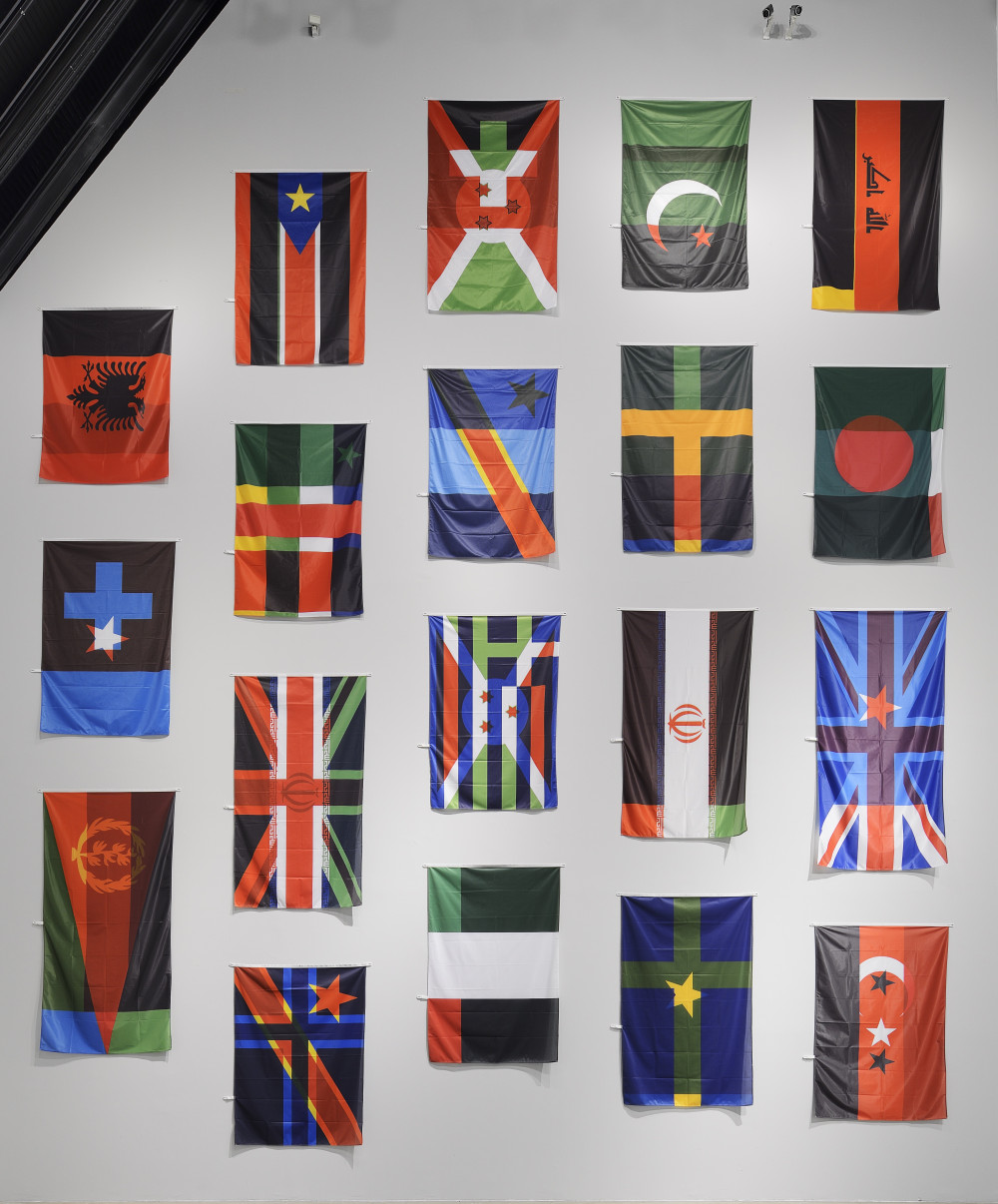Abstractions sur le Thème des Nations
Pierre Bismuth's work with flags through digital printing on synthetic textiles and started with a series titled Abstractions, which was on display on flagpoles in Basel's Münsterplatz for the purpose of Art Basel in 2019. The work has evolved ever since, with different variations based on political, economic and social data from the past and present. With Abstractions sur le Thème des Nations (2020), consisting of 20 separable flags and made for the exhibition Museum For Preventive Imagination - Editorial at MACRO in 2020, Bismuth refers to the global refugee crisis.
"One of the two flags on these visual hybrids represents the refugee's country of origin, the other the European host country. The artistic result is his new "inter/national flags", which become conceptual pictorial objects with two merging national symbol systems, thereby losing their previously clearly defined representational properties. With this aesthetic intervention, Pierre Bismuth does not only reflect on the goals and directions of global refugee flows, but also on the precarious position nation-states hold today in neoliberal globalisation and the power of global players in global affairs." [Stange, 2019].
"The surprisingly vivid colours of these flags remind us that Bismuth possesses great graphic skills which, while not a predominant element in his artistic practice, nevertheless demonstrates a clear pictorial sensibility" [Asad Raza, 2021]. With their abstraction and the context in which they are presented, these works become "pictorial" and refer to 20th and 21st century history of art.
"In the end, this play on flags and the nation-states they represent [... ] veils a fourth dimension that is neither artisanal nor industrially manufactured, and contains neither a coherent ideological strategy, nor a mash-up, nor criticism, nor a clear message. The artistic effect of flags is much more subtle" [Asad Raza, 2021].
This work moreover expresses a place: Brussels, the city where the artist has lived since the 1990s and which remains a focal item in debates about migration and multicultural coexistence.
